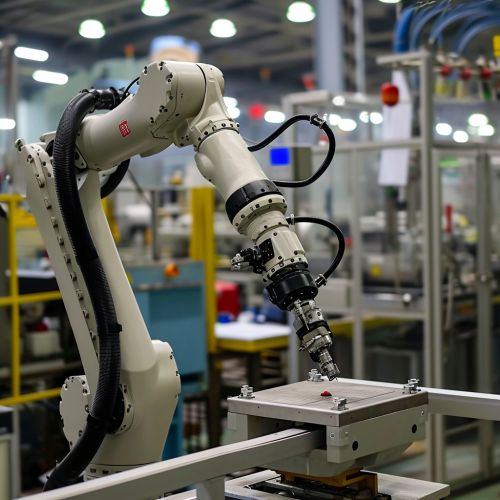Industrial Robot
Introduction
An industrial robot is an automated, programmable, and capable of movement on two or more axes machine, which is used in the production of goods and services. Industrial robots are designed to perform a variety of tasks with high precision and speed. They are used in a wide range of industries, including automotive, electronics, food and beverage, and pharmaceuticals.
History
The concept of industrial robots has its roots in early automation and mechanization. However, the first true industrial robot, the Unimate, was introduced by George Devol and Joseph Engelberger in 1961. This robot was used by General Motors in their production line for die casting handling and spot welding. The introduction of the Unimate marked the beginning of a new era in industrial production, with robots increasingly being used to perform tasks that were previously done by humans.
Types of Industrial Robots
There are several types of industrial robots, each designed to perform specific tasks. These include:
Articulated Robots
Articulated robots have rotary joints that allow for a full range of motion. These robots are used in a variety of applications, including welding, painting, and assembly.
Cartesian Robots
Cartesian robots, also known as gantry or rectilinear robots, move in a linear motion along the X, Y, and Z axes. They are used in applications such as pick and place, assembly, and CNC machining.
SCARA Robots
SCARA robots (Selective Compliance Assembly Robot Arm) are used in high-speed assembly and pick and place applications. They have two parallel joints that provide compliance in one selected plane.
Cylindrical Robots
Cylindrical robots operate within a cylindrical-shaped work envelope. They are used in assembly operations, handling machine tools, and spot welding.
Delta Robots
Delta robots are designed for high-speed, precision applications. They are often used in food packaging and pharmaceutical industries.
Polar Robots
Polar robots, also known as spherical robots, have a work envelope that is shaped like a sphere. They are used in handling machine tools, diecasting, fettling machines, gas welding, and arc welding.
Applications
Industrial robots are used in a wide range of applications, including:
- Welding: Robots can perform both spot welding and arc welding. They offer high precision and can work in environments that are hazardous for humans.
- Assembly: Robots can assemble complex components with high speed and precision. They are commonly used in the automotive and electronics industries.
- Painting: Robots can paint with high precision and uniformity. They can also work in environments where harmful fumes are present.
- Picking and Placing: Robots can pick and place items with high speed and accuracy. This is particularly useful in the food and beverage industry, where speed and hygiene are critical.
- Machine Tending: Robots can load and unload machines, freeing up human operators to perform more complex tasks.
- Packaging and Palletizing: Robots can package items and stack pallets with high speed and precision.
Advantages and Disadvantages
Industrial robots offer several advantages, including increased productivity, improved quality, reduced waste, and improved safety. However, they also have some disadvantages, such as high initial costs, the need for skilled operators, and the potential for job displacement.
Future Trends
The future of industrial robotics is likely to be shaped by advances in technology, including artificial intelligence, machine learning, and advanced sensors. These technologies will enable robots to perform more complex tasks, work more collaboratively with humans, and adapt to changes in their environment.
See Also
Robotics, Automation, Artificial Intelligence, Machine Learning


